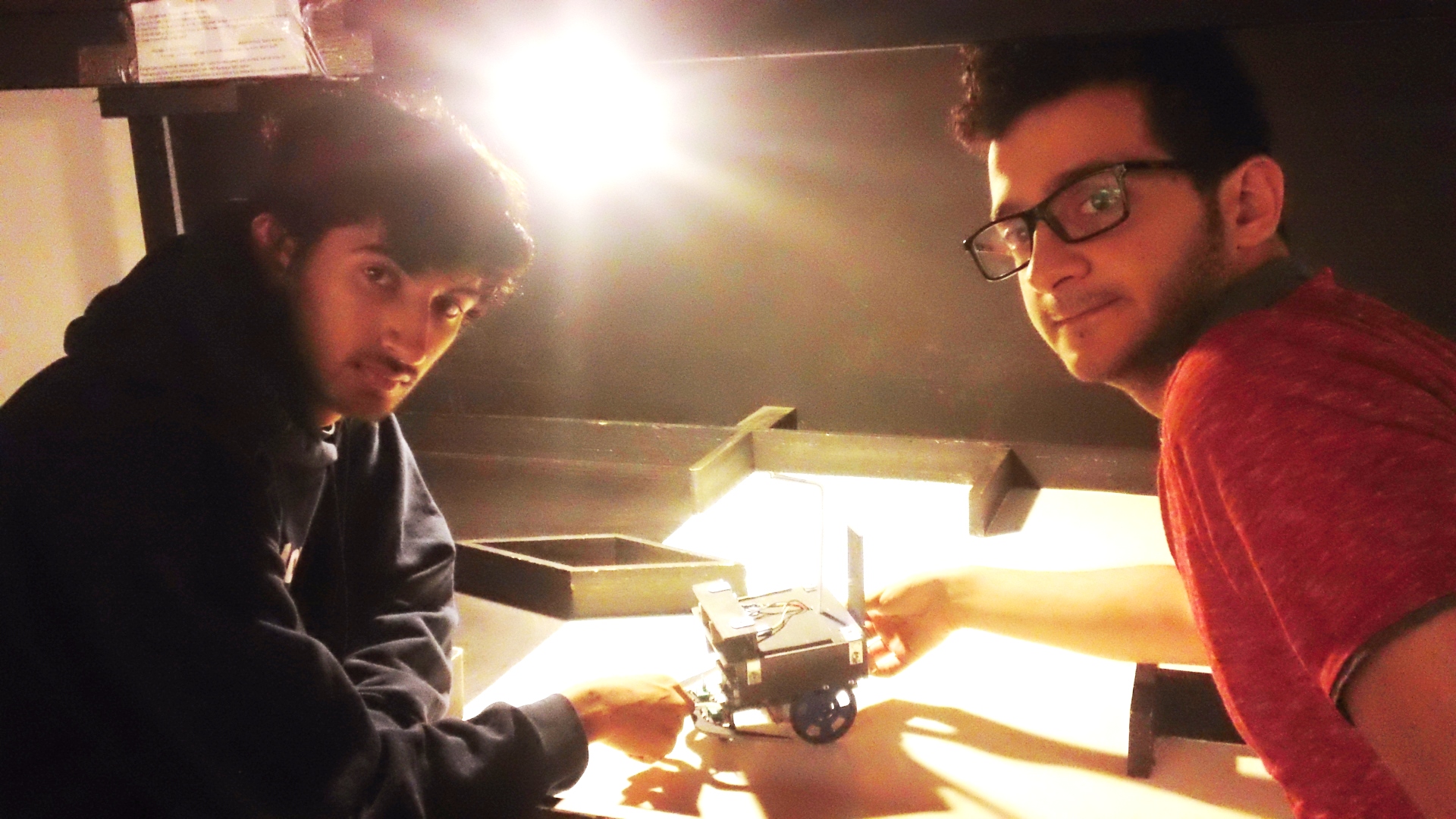Every summer, high school and undergraduate students team up with teachers and NASA scientists at NASA’s Goddard Institute for Space Studies or GISS in New York City. Known as the New York City Research Initiative or NYCRI, this program brings students and teachers face-to-face with premier scientists.
“We really want to inspire our teachers, students, interns and communities with the great work NASA is doing,” said Matthew Pearce, an education program specialist at GISS. “We have 12 interdisciplinary teams working on NASA research projects such as: building nanosatellites. Students create climate models for the Western African drought and measure the heat island effect in New York City. We have teams working on exoplanet biology. And they’re bringing what they learned back to their classrooms.”
The NYCRI teams at GISS consist of a high school student, an undergraduate college student, a high school teacher and a NASA scientist. For example, Francesca Lingo, a sophomore at the City College of New York, works alongside high school student Jonathan Chin and high school teacher Marianne Woody to understand how global climate conditions could have influenced the formation of life.
“We’re working under Linda Sohl to understand Earth as it was just forming and becoming habitable in the Neoproterozoic Era, between 1,000 to 541 million years ago,” Lingo said. She heard about the NYCRI program when Pearce spoke at her school about NASA opportunities for university students. “Other programs won’t tell you exactly what type of research they’ll have you do. But when I told Pearce my interest in astrobiology, he said he could absolutely find a fit for me.”
Teachers in the program both mentor students Create NASA STEM curriculum for their classes and receive guidance from their project’s NASA scientist. Stephanie Stern, a computer education teacher in North Bergen, New Jersey, studies ancient plant fossils under NASA GISS senior research scientist Dorothy Peteet. Alongside high school and college students, her team enters the field to take sediment core samples from wetlands and marshes. Stern tests these cores for organic materials, carbon and nitrogen elements, pollutants, radiation and nutrients.
“Back in New Jersey, I can take my students out to the Meadowlands and have them test cores in the lab—an opportunity they would not have otherwise,” Stern said. “My school holds an underserved population, with 95 percent of my students under a certain poverty rate. Because of programs like NYCRI, my students understand there are opportunities out there that they may not see everyday.”
NYCRI requires its participants to communicate their findings. Participants attend research seminars and a final summit with other government agencies, including the National Science Foundation, National Oceanic and Atmospheric Administration, the U.S. Department of Education and the U.S. Department of Defense.
This year, the NASA NYCRI teams led by Pearce took first place at the CUNY CREST STEM Poster Symposium for Best Poster. Over 90 teams from state, federal and local agencies presented their research at this symposium
“Right now we’re putting all of our work together in a poster, a PowerPoint presentation and a scientific paper,” said Cassandra Kopans-Johnson, a senior at Horace Mann School in New York. “As a high school student, I don’t have the same background as an undergrad student or teacher. But GISS taught me the skills to dive into the subject. Now we’re setting up the foundation for future work on how climate change is impacting ocean circulation. It’s amazing that a high school student like myself can walk into this world of NASA and take that experience back to the classroom.”
NYCRI encourages science, technology, engineering and math students and teachers in New York, New Jersey, Connecticut and Maryland to attend this program. Participants engage in summer enrichment programs at institutions near GISS, such as the Intrepid Sea, Air and Space Museum, The New York Center for Space Science Education, the American Museum of Natural History and the Hayden Planetarium, all in New York City.
“The participants’ experiences transform their schools and their communities, both in terms of inspiration and how students think differently about their futures,” Pearce said. “NYCRI has a tremendous opportunity to affect underserved students—not only in elevating school programs and inspiring students, but also to improve and support STEM education in the region. All of our teachers are becoming STEM experts and bringing classrooms to the cutting-edge of science.”
The summer 2015 NYCRI program concludes a five year grant award to Principal Investigator, Dr. Leon Johnson from Medgar Evers College. The Goddard Space Flight Center Office of Education in Greenbelt, Maryland is developing a new institute in collaboration with NASA’s Science Mission Directorate and the Goddard Sciences and Exploration directorate. The proposed Climate Change Research Initiative – CCRI – will be held at the Goddard Institute for Space Studies and will carry on the “proud tradition” of exemplary work and mentoring the next generation of STEM leaders.
For more information about GISS, visit:





























